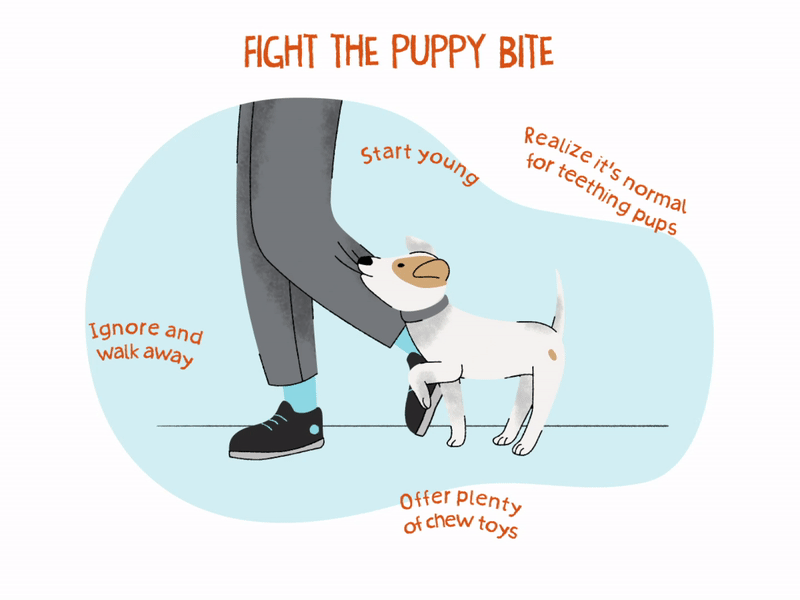Table of Contents
In this article, you will discover effective strategies to teach your furry friend to stop biting. We all adore our dogs, but when their sharp teeth become a little too friendly, it’s important to address the issue to maintain a safe and happy environment. Whether you have a rambunctious puppy or a mischievous older dog, these techniques will help you establish boundaries and ensure the well-being of both your canine companion and those around them. With patience and consistency, you’ll be on your way to a bite-free household in no time!
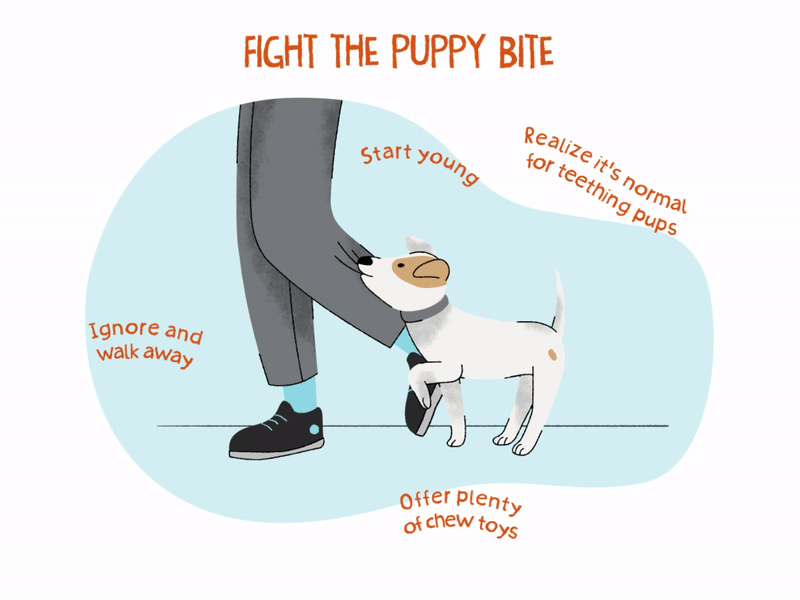
Understanding the Reasons for Biting
Identifying aggressive behavior
Understanding the reasons for biting is crucial in addressing the issue effectively. One of the first steps is to identify signs of aggressive behavior in your dog. Aggression can manifest in various ways, such as growling, snarling, lunging, or showing teeth. Recognizing these signals is essential in determining whether your dog’s biting is driven by aggression or other underlying factors.
Types of biting
There are different types of biting that dogs engage in, each with its own distinct triggers and motivations. Understanding these types can help you better address the issue. Play biting is a common behavior in puppies, which is usually harmless and a part of their learning process. However, it’s essential to teach them bite inhibition to prevent future problems. Fear-based biting occurs when a dog feels threatened or scared, while territorial biting is a way for dogs to protect their possessions or territory. Lastly, there is aggression-based biting, which may be rooted in dominance or protective instincts.
Common triggers for biting
Identifying the common triggers for biting is essential in preventing these situations or managing them appropriately. Dogs may bite when they feel threatened, scared, or in pain. They may lash out if someone invades their personal space or if they perceive a threat towards their owners or themselves. Understanding these triggers helps to curb biting incidents and address the underlying causes effectively.
Creating a Safe Environment
Securing hazardous items
Creating a safe environment for your dog is crucial in preventing biting incidents. Ensure that hazardous items, such as toxic substances, sharp objects, or small choking hazards, are securely stored out of your dog’s reach. By eliminating potential dangers, you reduce the risk of situations where your dog may feel the need to bite in self-defense or due to curiosity.
Introduction to socialization
Socialization plays a vital role in preventing aggression and biting. Expose your dog to various people, animals, and environments from an early age. Positive interactions with different individuals and situations can help your dog develop confidence and reduce the likelihood of fear-based aggression. Gradually increasing exposure helps your dog become comfortable and less inclined to resort to biting as a defense mechanism.
Ensuring physical and mental exercise
Providing ample physical and mental exercise for your dog is crucial in creating a safe and balanced environment. Regular exercise helps alleviate excess energy, reduces stress levels, and promotes overall well-being. Engage your dog in activities such as daily walks, interactive play sessions, puzzle toys, or training exercises. A tired, mentally stimulated dog is less likely to engage in aggressive behaviors, including biting.
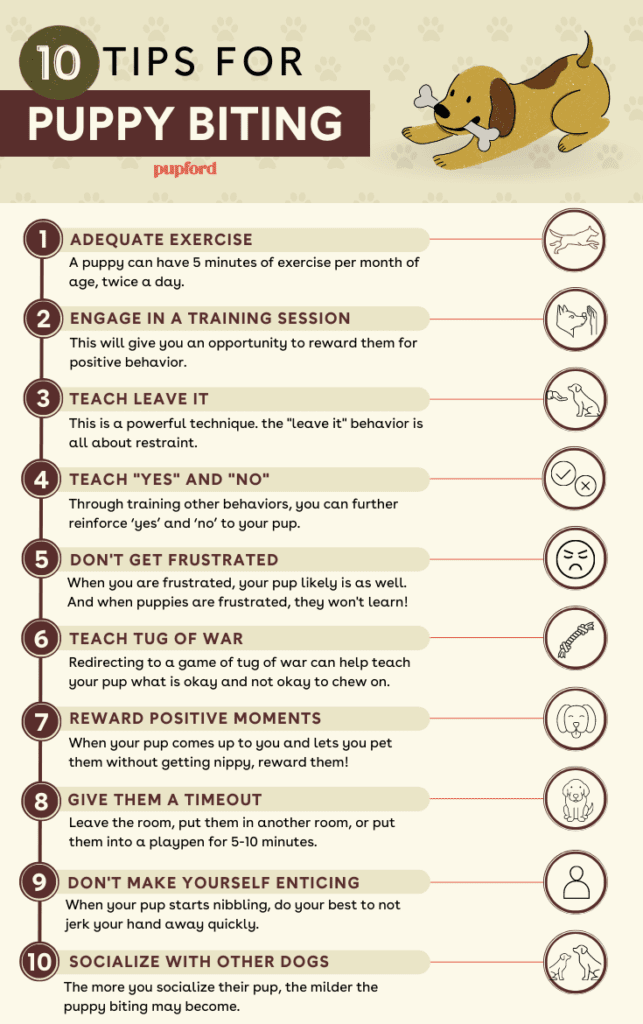
Establishing Consistent Rules and Boundaries
Implementing basic obedience training
Establishing consistent rules and boundaries through basic obedience training is essential in preventing biting. Teach your dog foundational commands such as sit, stay, down, and leave it. By setting clear expectations and ensuring your dog understands them, you establish yourself as the leader and reduce the likelihood of aggression. Consistent training provides a framework for your dog to follow and helps them understand appropriate behavior.
Using positive reinforcement
Positive reinforcement is a highly effective training method that focuses on rewarding desired behaviors rather than punishing unwanted ones. When your dog displays good behavior, such as refraining from biting, reward them with treats, praise, or play. Positive reinforcement builds a strong bond between you and your dog while encouraging them to repeat the desired behavior. By consistently rewarding non-biting behavior, you reinforce the message that biting is not acceptable.
Applying consistent discipline methods
While positive reinforcement is crucial, it’s also essential to apply consistent discipline methods to address unwanted biting incidents. When your dog displays aggressive behavior, use a firm but calm voice to discourage them. However, avoid physical punishment or yelling, as this can escalate the aggression or cause fear. Consistency is vital in reinforcing the message that biting is unacceptable, ensuring that your dog understands the consequences of their actions.
Teaching Bite Inhibition
Importance of bite inhibition
Teaching bite inhibition is crucial, especially for puppies, as it sets the foundation for appropriate behavior in adulthood. Bite inhibition refers to a dog’s ability to control the force of their bite, making it gentler and less likely to cause harm. Through early socialization and training, puppies learn to regulate their biting pressure, preventing serious injuries if they do bite in the future accidentally. Teaching bite inhibition is an essential component of preventing biting incidents.
Starting with gentle play
When teaching bite inhibition, start by engaging in gentle play with your puppy. Use suitable toys and allow them to mouth on your hand while monitoring their bite pressure. If their bites become too hard, yelp in a high-pitched voice or make a sound that indicates discomfort, temporarily stopping play. This simulates the reaction their littermates would give, teaching them that biting too hard results in an end to playtime. Gradually, they learn to adjust their bite strength to prevent causing harm.
Using verbal cues
Introducing verbal cues during playtime helps further reinforce bite inhibition. Whenever your puppy bites too hard, use a consistent word or phrase like “gentle” or “easy” to signal that they need to reduce their bite pressure. Over time, the verbal cue becomes associated with gentler play and redirects their biting habits appropriately. Consistent and patient reinforcement of these verbal cues helps your dog develop valuable bite inhibition skills.
Gradual decrease in pressure
As your puppy progresses in their bite inhibition training, gradually decrease the tolerance for any level of biting pressure. Encourage them to mouth on your hand with minimal pressure, reinforcing when they exhibit restraint and control. By consistently raising the expectations for gentle play, your puppy learns to inhibit their biting naturally, reducing the chances of biting incidents as they mature.
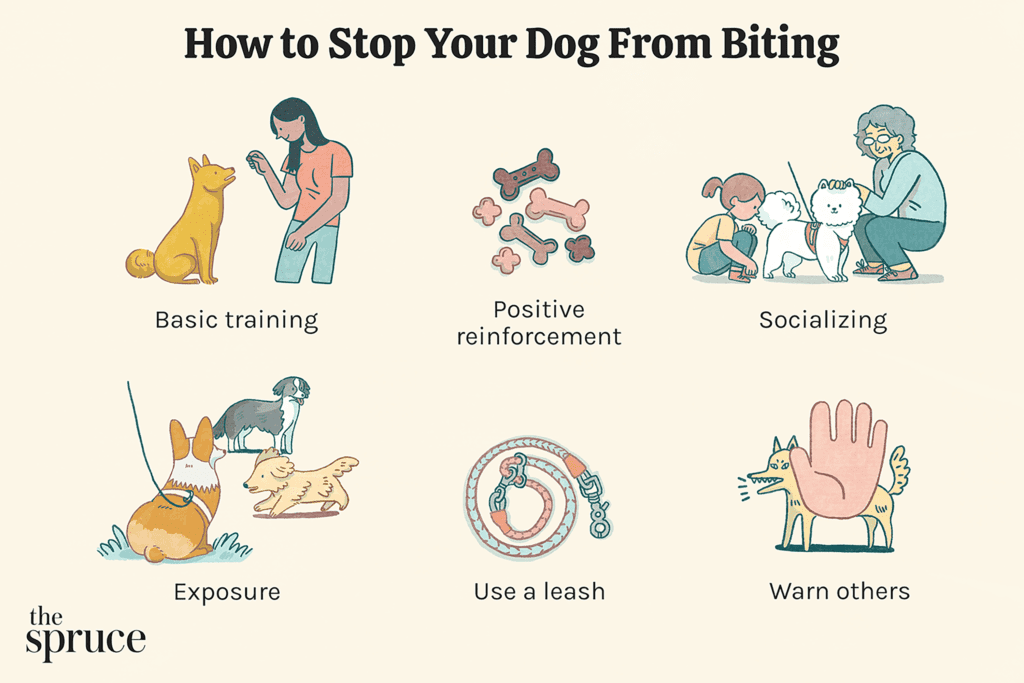
Socializing Your Dog Appropriately
Introducing new people and animals
Proper socialization is vital for preventing fear-based aggression and biting. Introduce your dog to various new people and animals in a controlled and positive environment. Start with people they are familiar with and gradually expose them to individuals from different age groups, ethnicities, and appearances. Similarly, introduce your dog to other friendly and well-behaved dogs to foster positive dog-to-dog interactions. Controlled socialization helps your dog develop confidence and reduces the likelihood of fear-based aggression towards new individuals or animals.
Proper dog-to-dog interactions
When socializing your dog with other dogs, monitor their interactions closely. Allow them to meet on neutral ground and observe their body language for signs of discomfort or tension. Encouraging polite greetings, such as sniffing each other’s rear ends, helps establish a positive interaction. If any signs of aggression arise, calmly separate the dogs and try again later or seek professional guidance if necessary. Proper dog-to-dog interactions are crucial in preventing territorial or dominance-based aggression that may lead to biting.
Supervised exposure to different environments
Expose your dog to various environments to help them become comfortable and adaptable. Start with quiet and controlled settings, gradually introducing them to busier areas, different surfaces, and unfamiliar places. Ensure that these exposures are supervised, providing your dog with support and reassurance as they encounter new sights, sounds, and smells. Gradual exposure to different environments helps build resilience and reduces the likelihood of fear-based aggression or biting in new situations.
Obtaining Professional Help
Identifying severe aggression cases
If your dog’s biting behavior persists or escalates despite your best efforts, it may be necessary to seek professional help. Identifying severe aggression cases is crucial, as professional trainers or behaviorists can provide expert guidance tailored to your dog’s specific needs. Signs of severe aggression include unprovoked biting, aggressive behavior towards multiple individuals or animals, or a history of serious injuries caused by biting. Recognizing the seriousness of these cases allows you to take appropriate action promptly.
Seeking guidance from a professional trainer or behaviorist
Professional trainers or behaviorists have the knowledge and experience to address complex aggression issues. They can evaluate your dog’s behavior, develop a tailored training plan, and guide you in implementing effective strategies. These experts can also help you understand the underlying causes of your dog’s biting and provide support throughout the training process. Seeking professional guidance is a proactive step towards resolving severe aggression cases and ensuring the safety of both your dog and others.
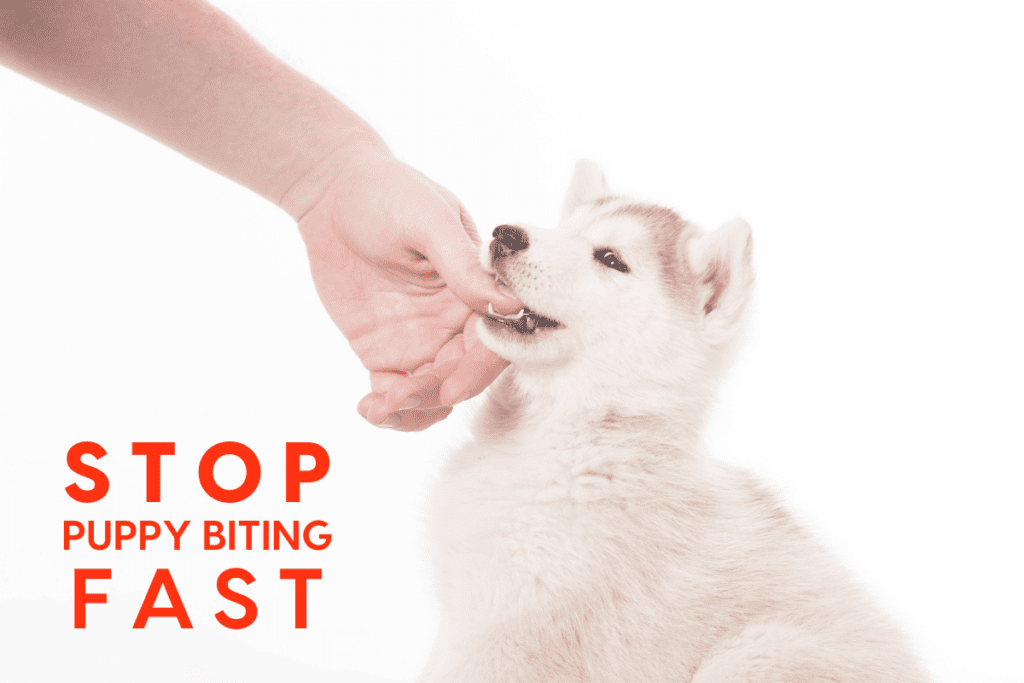
Addressing Resource Guarding
Recognizing signs of resource guarding
Resource guarding refers to aggressive behaviors displayed by dogs to protect their valued possessions, such as food, toys, or sleeping areas. Recognizing the signs of resource guarding is crucial in effectively addressing this behavior. Common signs include growling, snarling, lunging, or biting when someone approaches their resources. Early intervention and training can help modify this behavior and prevent potential injuries.
Implementing desensitization and counterconditioning techniques
Addressing resource guarding requires implementing desensitization and counterconditioning techniques. Gradually expose your dog to people near their valued possessions, starting at a distance that does not trigger aggressive behaviors. Use positive reinforcement to reward your dog for remaining calm and non-reactive. Over time, decrease the distance between your dog and the person, reinforcing positive behavior at each step. This process helps your dog associate people approaching their resources with positive experiences, reducing the need for aggressive responses.
Consulting a professional for severe cases
For severe resource guarding cases where the aggression persists despite your training efforts, it’s essential to consult a professional trainer or behaviorist. They can assess the severity of the behavior, implement advanced techniques, and guide you through a more intensive training program. A professional can provide insights and strategies specific to your dog’s situation, giving you the best chance of effectively addressing and managing resource guarding behavior.
Handling Fear and Anxiety Related Biting
Identifying fear or anxiety triggers
Fear and anxiety can lead to biting behavior, making it essential to identify the triggers that cause these emotions in your dog. Common triggers include loud noises, unfamiliar environments, specific individuals, or previous traumatic experiences. Understanding your dog’s fears and anxieties helps you create a supportive and reassuring environment while working to desensitize them to these triggers.
Gradual desensitization to triggers
Desensitization is a process that involves gradually exposing your dog to their fear or anxiety triggers in a controlled and positive manner. Start by exposing them to a minimal level of the trigger, one that does not cause fear or anxiety. Pair this exposure with positive experiences such as treats or playtime. Over time, incrementally increase the intensity or proximity of the trigger while maintaining a positive association. This gradual desensitization helps your dog build confidence and reduce their fear or anxiety-related biting behavior.
Utilizing positive reinforcement techniques
Positive reinforcement techniques are invaluable in addressing fear and anxiety-related biting. Whenever your dog displays calm and non-reactive behavior in the presence of their triggers, reward them with treats, praise, or affection. This positive association reinforces the idea that their triggers are not something to fear, and encourages them to display appropriate behavior. Patience, consistency, and understanding are key when utilizing positive reinforcement techniques to address fear or anxiety-related biting.
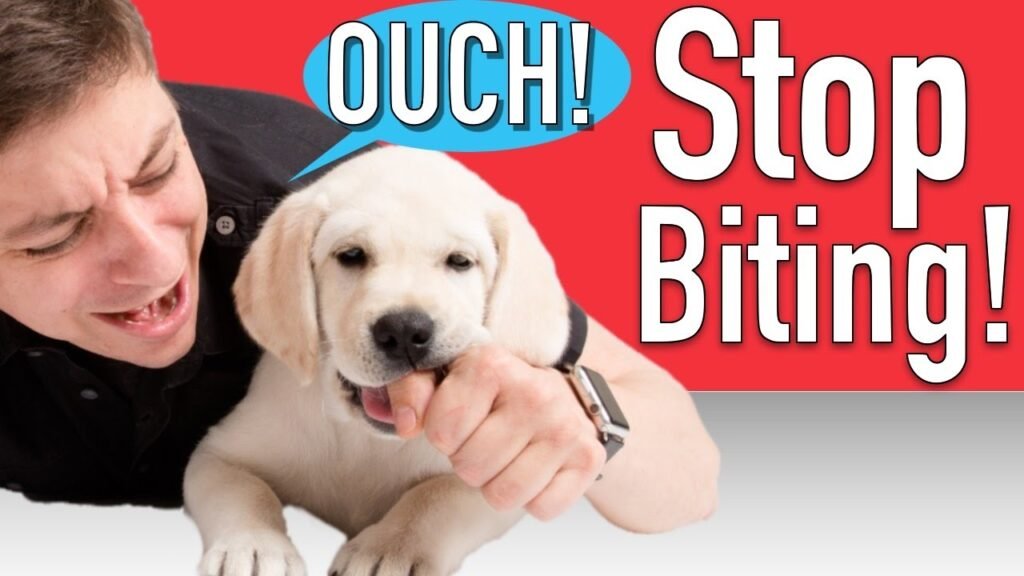
Preventing Pain-Induced Biting
Preventing accidental pain during handling
Dogs may resort to biting if they experience pain during handling, such as when touched or manipulated in sensitive areas. Preventing accidental pain during handling is important in maintaining your dog’s trust and minimizing the risk of aggressive reactions. Approach handling with care, avoiding sudden movements or actions that may cause discomfort. Be gentle and gradual when touching or grooming your dog, paying attention to their reactions to avoid causing them pain or discomfort.
Teaching your dog to tolerate touch and restraint
Teaching your dog to tolerate touch and restraint is essential to prevent pain-induced biting. Start by gradually and gently exposing them to various types of handling, such as touching their paws, ears, or tail. Pair each touch with a reward, ensuring a positive association. Gradually increase the duration and intensity of handling, rewarding calm and relaxed behavior. By teaching your dog to accept and tolerate touch and restraint, you minimize the risk of pain-induced biting incidents.
Seeking veterinary assistance if necessary
If your dog displays unusual discomfort, pain, or exhibits biting behavior specifically during handling, it’s crucial to seek veterinary assistance. A thorough examination can help identify any underlying medical conditions that may be causing pain or discomfort. Addressing these issues promptly not only prevents further pain but also reduces the risk of pain-induced biting. Your veterinarian can provide guidance and recommend appropriate treatments or management strategies.
Maintaining Consistency and Patience
Importance of consistency in training
Consistency is key when addressing biting behavior in dogs. It’s essential to maintain consistency in your training methods, rules, and boundaries. Dogs thrive in structured environments where they understand what is expected of them. By consistently reinforcing appropriate behavior, setting clear expectations, and avoiding mixed messages, you create a consistent and reliable framework for your dog to follow. This consistency helps mitigate aggressive behaviors, including biting, and fosters a harmonious relationship between you and your dog.
Being patient with your dog’s progress
Addressing biting behavior requires patience, as progress may not happen overnight. Each dog is unique, with varied learning curves and backgrounds. Be patient with your dog’s progress, understanding that change takes time and effort. Celebrate small victories along the way, reinforcing positive behaviors and providing encouragement. Patience allows you to build a stronger bond with your dog and guide them towards improved behavior and reduced biting incidents.
Not giving in to biting behavior
Consistency and patience are essential, but it’s equally crucial not to give in to biting behavior. Giving in or allowing biting as a means of attention or control reinforces the behavior and can lead to more serious issues. Establish clear boundaries and consequences for unacceptable behavior. Be firm and consistent in applying these boundaries, ensuring that biting is consistently discouraged. By not giving in to biting behavior, you help your dog understand that it is not an acceptable form of communication, fostering a safe and harmonious environment for everyone involved.
In conclusion, understanding the reasons for biting, creating a safe environment, establishing consistent rules and boundaries, teaching bite inhibition, appropriate socialization, seeking professional help when needed, addressing resource guarding, managing fear and anxiety, preventing pain-induced biting, and maintaining consistency and patience are essential aspects of training a dog not to bite. By following these comprehensive strategies, you can help your dog overcome biting behaviors and establish a peaceful and trusting relationship. Remember, training takes time and effort, but your dedication will be rewarded with a well-behaved and happy canine companion.

